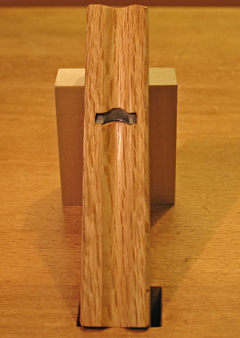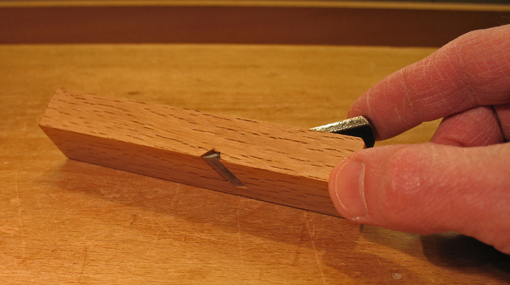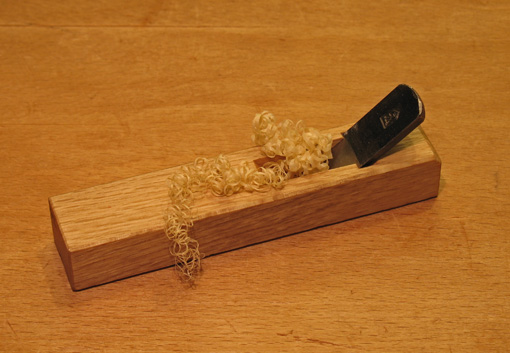These simple but very effective little planes come in a variety of blade types and contours. I love ‘em.
The 9 mm round over plane is, ounce for ounce, one of the most useful tools in my shop. The good quality laminated steel blade is a wedge fit in the 4 3/4″ body and is easily adjusted with light hammer taps. To get a solid feel for the cutting action, I grip the plane with my thumb and fingers on opposite sides near the mouth. It cuts a rounded chamfer which gives a slightly softer look than a plain flat chamfer. To hone the bevel side of the blade, I use a 5/8″ dowel covered with sticky-back 3M micro-abrasive film. This plane is about as simple and problem free as a tool can be.
I use the mini rabbet plane on the pull stroke for trimming the shoulders of small tenons where a metal plane might be unwieldy. The projection of the laminated blade must be adjusted carefully, but lacking a chipbreaker, this is an easy task. The skewed blade produces a smooth cutting action while the long length of sole in front of the cutting edge allows for secure registration of the plane prior to entering the cut. The sole and sides are easily tuned on a flat surface with sandpaper.

These tools are good examples of “just enough” design – they work beautifully with no frills. Japanese mini planes earn their place on the tool roster. They are available from many suppliers, including Hida Tool, who carry a good selection.



Not only all that, but they are insanely cute! Ahem. Onto the wish list they go!
David,
Beware of the post about the #1 plane.
Rob